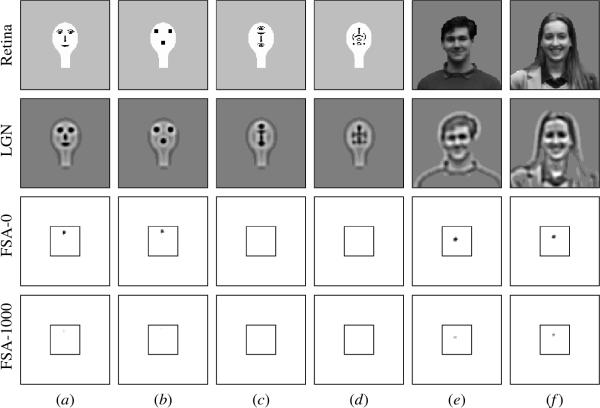
Click on the image to see a PDF version (for zooming in)
Fig. 10.16. Postnatal decline in response to schematic images.
Before postnatal training, the prenatally trained FSA (row "FSA-0"),
responds significantly more to the facelike stimulus (a) than to the
three-dot stimulus (b; p = 0.05) or to the scrambled faces (c,d; p <
10-8; Appendix C.2). These responses are similar to those
found by Johnson and Morton (1991) in infants up to 1 month of age. In
some of their experiments, no significant difference was found between
(a) and (b), which is unsurprising given that they are only barely
significantly different here. As the FSA neurons learn from real faces
postnatally, they respond less and less to schematic faces. The bottom
row shows the FSA response after 1000 postnatal iterations. The FSA
now rarely responds to (a) and (b), and the average difference between
them is no longer significant (p = 0.25). Thus, no preference would be
expected for the facelike schematic after postnatal learning, which is
exactly what Johnson and Morton (1991) found for older infants, i.e. 6
weeks to 5 months old. The response to real faces also decreases
slightly through learning (e,f ), because the newly learned average
face and hair outline RFs are a weaker match to any particular face
than were the original three-dot RFs. However, this decline is much
smaller, because real faces are still more similar to each other than
to the schematic faces. Thus, HLISSOM predicts that older infants will
still show a face preference if tested with more-realistic stimuli,
such as photographs.
|